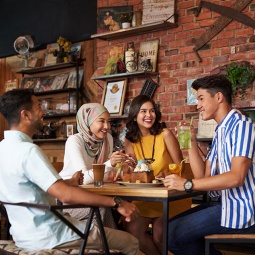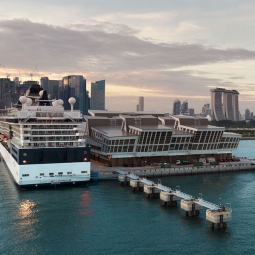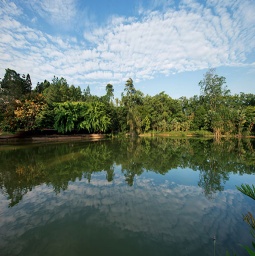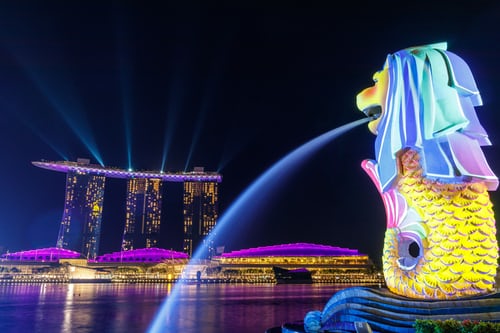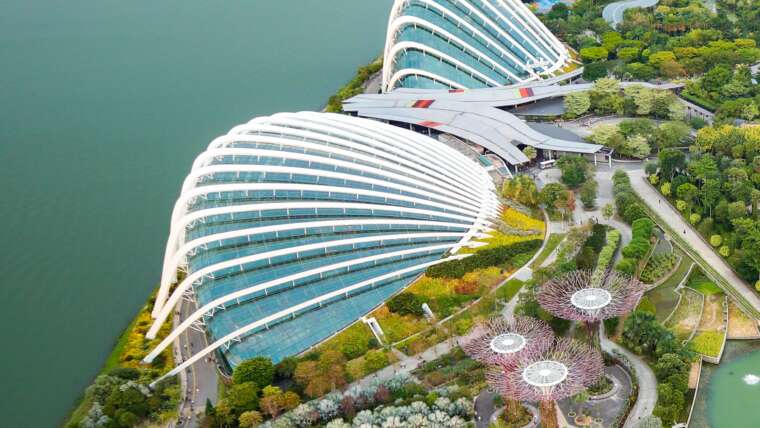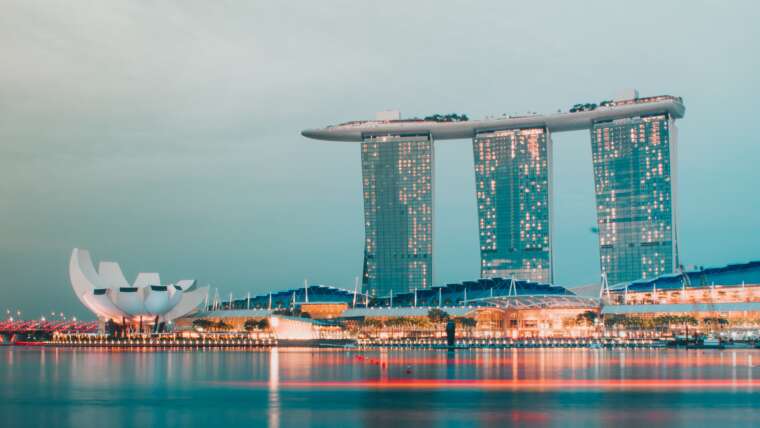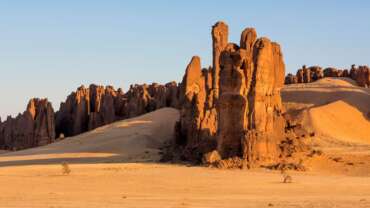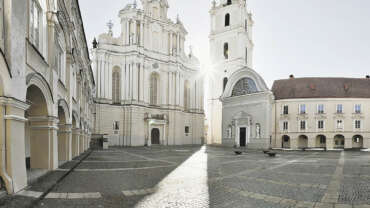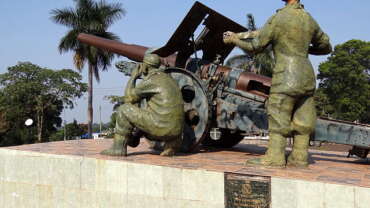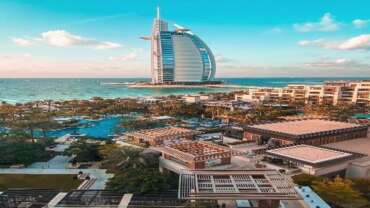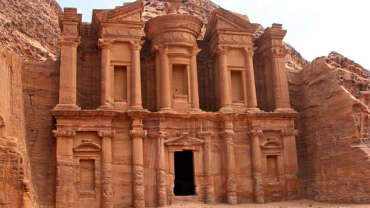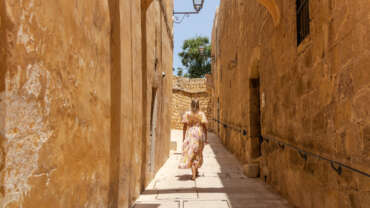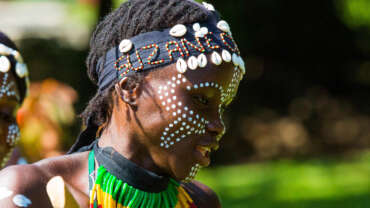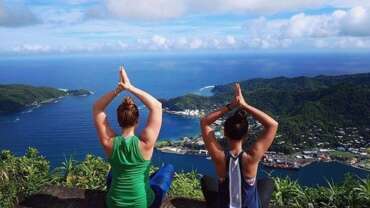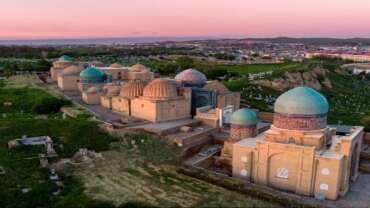Singapore - Passion Made Possible
Singapore, city-state located at the southern tip of the Malay Peninsula, about 85 miles (137 kilometres) north of the Equator. It consists of the diamond-shaped Singapore Island and some 60 small islets; the main island occupies all but about 18 square miles of this combined area. The main island is separated from Peninsular Malaysia to the north by Johor Strait, a narrow channel crossed by a road and rail causeway that is more than half a mile long. The southern limits of the state run through Singapore Strait, where outliers of the Riau-Lingga Archipelago—which forms a part of Indonesia—extend to within 10 miles of the main island.
Singapore is more than its tourist attractions. It’s constantly evolving, reinventing, and reimagining itself, with people who are passionate about creating new possibilities. It’s not just about what you can do here, it’s about what you can be. Awaken your passions and live out your dreams when you explore the city and meet the talented locals who call it home.
We are a city fuelled by passion and pride. Around every corner, incredible experiences are being crafted, cooked, painted, designed, grown or built by locals who share a common trait: passion. Like them, you’ll be empowered to do what you love in this city of limitless possibilities—whether you’re a foodie, explorer, collector, socialiser, action seeker or culture shaper.
A spirited city
The story of Singapore is one of trials, tribulations and triumphs. In a short span of just over 50 years, we have evolved from a colony to a city-state with our own unique identity, forged by a spirit of never settling. And it’s this spirit that’s imbued into the architectural wonders, lush parks, proud heritage, world-class attractions and amazing food of the cosmopolitan metropolis you see today.
History of Singapore
Singapore Island originally was inhabited by fishermen and pirates, and it served as an outpost for the Sumatran empire of Srīvijaya. In Javanese inscriptions and Chinese records dating to the end of the 14th century, the more-common name of the island is Tumasik, or Temasek, from the Javanese word tasek (“sea”). Rajendra Chola I, ruler of the southern Indian Chola kingdom, attacked the island in 1025, and there was another Chola raid in 1068. In 1275 the Javanese king Kertanagara probably attacked Temasek when he raided Pahang on the east coast of the peninsula.
According to a Chinese traveler, Wang Dayuan, just before 1349 about 70 Tai (Siamese) war boats besieged Temasek for a month but had to withdraw. The Javanese epic poem Nāgarakṛtāgama (written 1365) includes Temasek among the conquests of the Javanese empire of Majapahit. At the end of the 14th century, Temasek fell into decay and was supplanted by Malacca (now Melaka). Yet in 1552 it was still a port of call from which St. Francis Xavier dispatched letters to Goa, and João de Barros described its busy shipping activity in his history Décadas da Ásia (1552–1615).
Rajendra may have named the city Singapura (“Lion City”), later corrupted to Singapore, or the name may have been bestowed in the 14th century by Buddhist monks, to whom the lion was a symbolic character. According to the Sejarah Melayu, a Malay chronicle, the city was founded by the Srīvijayan prince Sri Tri Buana; he is said to have glimpsed a tiger, mistaken it for a lion, and thus called the settlement Singapura.
People of Singapore
Ethnolinguistic composition
The population of Singapore is diverse, the result of considerable past immigration. Chinese predominate, making up some three-fourths of the total. Malays are the next largest ethnic group, and Indians the third. None of those three major communities is homogeneous. Among the Chinese, more than two-fifths originate from Fujian province and speak the Amoy (Xiamen) dialect, about one-fourth are Teochew from the city of Shantou in Guangdong province, and a smaller number are from other parts of Guangdong. The Chinese community as a whole, therefore, speaks mutually incomprehensible dialects. Linguistic differences are less pronounced among the Malays, but the group includes Indonesians speaking Javanese, Boyanese, and other dialects. The Indian group is most diverse, consisting of Tamils (more than half), Malayalis, and Sikhs; it also includes Pakistani and Sinhalese communities.
Because of this ethnic diversity, no fewer than four official languages are recognized—English, Mandarin Chinese, Malay, and Tamil. English remains the main medium for administration, commerce, and industry, and it is the primary language of instruction in schools. Mandarin, the official language of China, transcends dialect barriers, and its use is strongly promoted; one-third of the school population is taught in that language. Malay is designated as the country’s national language, and, like English, it is widely used for communication among ethnic groups and plays a particularly useful role in view of the close ties between Singapore and Malaysia.
Religions
Religious affiliations reflect ethnic patterns. About two-thirds of all Chinese profess some degree of attachment to Confucianism, Buddhism, or Daoism or to some combination thereof. Virtually all Malays, and some Indians, adhere to Islam, which is the formal religion of about one-seventh of the population. The Christian community has grown rapidly to become comparable in size to the Muslim population; nearly all Christians are Chinese. Almost all of the remaining population practicing a religion is Hindu, but there are also many Singaporeans who have no religious affiliation.
Art & Culture of Singapore
Literature
Singapore’s literature embraces a collected literary works by Singaporeans in any of the country’s four main languages – Chinese, English, Malay and Tamil. As an fundamental part of the culture of the country literature potrays a specific aspect of Singaporean society. In every literary work a glimpse of multicultural society is being exposed. Singaporean writers such as Tan Swie Hian and Kup Pao Kun have made a significant contribution in Singapore’s literature. Other known writers of Singapore are Angeline Yap, Arthur Yap, Aaron Lee Soon Yong, Hsu-Ming Teo, Hwee Hwee Tan, Simon Tay, Edwin Thumboo, Toh Hsien Min, and Yong Shu Hoong.
English literature in Singapore dates back to the nineteenth century base on the earliest evidence. Began with the early eighteen thirties, poetry, short stories mainly tackle about the sentiments of the people during the First World War. In 1935, F. M. S.R, a parody of T.S. Eliot was the first Singaporean work of poetry published in London.
The first published Singaporean poetry collection was written by Wang Gungwu in 1950. The Pulse is one of the first efforts to produce a distinctively Malayan voice in English language poetry.
By the year 1965 new breed of Singaporean writers emerged. Edwin Thumboo, Gopal Bharatam and Dr. Goh Poh Seng are a few of the celebrated Singaporean writers recognized around the world. Edwin Thmboo is known for his transience of things, for his awareness of the role and responsibilities of a poet help in developing the identity of Singapore. Some of his famous works are Rib of Earth and God Can Die. In the later part of 1990s English poetry in the country found a new force with its new generation of poets born around or after 1965, some of the prominent names are Alfian bib Sa’at, Alvin Pang, Cyril Wong, Boey Kim Cheng, Felix Cheong and Yong Shu Hoong. The present trend of Singapore’s poetry is more on political awareness and on personal perspective of Singaporean culture and society.
Drama plays a significant contribution to the literary world of Singapore. The English drama in Singapore during the pre 1819-1960 was dominated by numerous colonial and expatriate groups and drama were played by English actors to predominantly English audience. Goh Pong Seng, a known novelist and poet started the English Drama in Singapore. The era of 1960s is considered to be the beginning of local writings; some local writers are taking part, such as The Reward which was published in New Cauldron and The Escape by Soh Eng Lim. The theme usually tackled life of educated Singaporean studying abroad and commenting on the state of affairs at home. Some of the notable works published were Emily of Emerald Hill by Stella Kon, One Year Back Home by Robert Yeo and Fat Virgins, Fast Cars and Asian Values: A Collection of Plays from Theatreworks’ Writer Lab by Kuo Pao Kun.
Visual Arts
Art is one way of representing one’s culture. A visual art is an individualistic practice. Artist creation and execution came from various sources and references yet his work is an individual act. The visual arts scene in Singapore has experienced remarkable growth and advancement since the colonial days, from the 19th century scenario where artists ranging from well-known European painters to anonymous local craftsmen worked their arts in the bustling entrepot of the Singapore to more than 500 visual arts exhibition.
The usual theme of Singaporean visual arts are abstractions, human figure, landscape, portraits, still life, urban scenes, and village scenes. Some of the known artists are Tan Swie Hian, Liu Kang, Georgette Chen, Francis Ng and Heman Chong.
Sculpture can be considered the original art of prehistoric man. Ng Eng Teng is considered to be the Grandfather of Singapore’s Sculpture. Ng Eng Teng was the first local who is best known for his sculpture works, some of his works include Mother and Child bronze sculpture outside toe Far East Shopping Center and The Explorer situated at the entrance of Singapore Art Museum. Another known sculptor of Singapore is Lim Nang Seng, the one who designed the Singapore’s first batch of one-cent coins in 1967.
In 1976 the establishment of Art Gallery in National Museum gave a major boost to the Singaporean visual art. Local artists were given opportunity to hold their exhibits. By the 1995 the Singaporean Art Museum was founded exclusively for visual arts.
Architecture
The architecture of Singapore has been greatly inspired by the socio-historic developments. Being a British colony many of the early civic and government buildings were built by colonial architects adopting classical colonial designs being patterned after the Indian colonial buildings. There are also less imposing Malay structures belonging to Malays and other migrant communities.
Singapore’s architecture exhibits a range of influence and style from different places and periods. The traditional colonial architectural design includes the gothic for churches; Chinese chophouse and bungalow, Palladian and renaissance styles for government buildings. Some of the examples traditional architecture are architecture are the Singapore Art Museum, Raffles Hotel, Old Parliament House, Chinese Protectorate, Churches of St. Peter and Paul, Shophouses with elaborate pilasters and Singapore National Museum.
The exigency of tropical climate considerably determined the structure of the country’s private buildings. A mixture of classical and Malayan styles evolved with the constructions that paid scrupulous attention to flooding, humidity and ventilation. In order to suit Singaporean’s lifestyle and differing individual demands concept of mass-produced buildings keeps on altering.
Singapore’s modern architecture is dominated by completely contemporary style of buildings, mainly the Brutalist style that is evident in many high rise flats of public housing as well as many old commercial and government linked buildings like Temasek Tower, DBS Buildings and Singapore Land Tower.
Culture
A comparatively modern amalgam of semi-indigenous Malay population in which majority are third generation Chinese, Indians and Arab immigrants with intermarriage, with existing Eurasian community and Peranakan (Chinese and Malay descents) is a way to describe Singaporean culture.
With unique combination of ethnic groups Singapore has achieved a considerable degree of cultural diffusion that led to Singapore’s rich mixture of diversity for its young generation. Some good examples of this are – the English language is primarily British English with a little influence of American English; colloquial dialect of English known as Singlish that has many Creole-like characteristics due to the incorporation of various language and grammar from Chinese, Indian and Malay languages; and the Singaporean cuisine, that is highly influenced by Chinese, Indian, Indonesian and Malaysian delicacies.
The number of ethnic neighborhoods in Singapore such as Chinatown and Little Indian that were created under the Raffles Plan to segregate the new immigrants into ethnic ghettoes. Though segregation of ethnicity does no longer exist each culture was able to retain selective elements of their specific culture, thus resulting to diverse patronage to some elements of a particular culture.
Festivals
With Singapore’s multi-cultural nature, every ethnic group in the country celebrates its own festivals. Throughout the year celebration of some form or other brings visual feast of color, spectacle, and ceremony that being acknowledged and enjoyed by the whole community of Singapore. Some of the well celebrated festivals of the country include Festival of Lights (Deepvali), Buddhist celebration of Vesak Day, Chinese New Year celebration and Christmas.
Performing Arts
The local art scene of the country still remains handicapped despite the attempt of the recent government to promote the country as a cultural center for arts and culture; this is due to the strict legislation. All scripts to be performed in Singapore must be evaluated in advance by the Public Entertainment Licensing Unit (PELU). PELU has the sole right to allow or ban any script it views.
By year 2000, the legislation has been loosening some restriction and this led to the emergence of several performing art groups. Some of the prominent local arts groups include TheatreWorks, Singapore Repertory Theater, Singapore Dance Theater, Singapore Chinese Opera, Orkestra Melayu Singapura, Singapore Indian Orchestra and Choir and The Singapore Lyric Opera. Singapore Arts Festival is held annually. The festival serves as a gathering of international and local artist performing in a wide variety of events including music, dance and theater.
Now Singapore as a gateway between East and West, offers unique opportunities to people who wish to enhance their artistic skills in the field of theater and music. Professional and amateur theater companies, dance troupes, musical groups and opera companies offer a wide range of Asian as well as Western performance.
Our way of Life
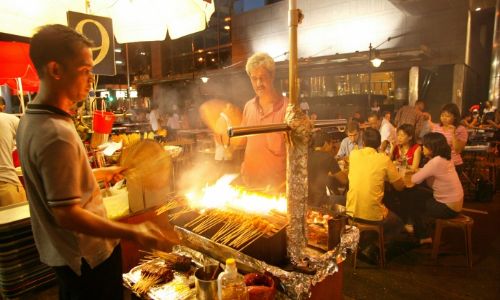
Whether you’re a nature lover, culture buff, thrill-seeker or cocktail enthusiast, Singapore has a wide selection of leisure offerings within easy reach.




